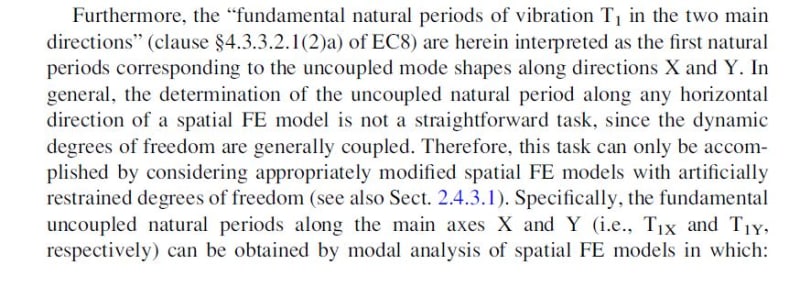DimzK
Structural
- Jun 24, 2018
- 30
I have been trying to google this and I am getting some ideas, but if someone can explain this difference between coupled vs. uncoupled natural period in MDOF analysis for 3D models, that would be great. Just to add some context to this, I am trying to understand the seismic analysis of building and reading the below excerpt from a book:


